This article was co-authored by wikiHow Staff. Our trained team of editors and researchers validate articles for accuracy and comprehensiveness. wikiHow's Content Management Team carefully monitors the work from our editorial staff to ensure that each article is backed by trusted research and meets our high quality standards.
The wikiHow Video Team also followed the article's instructions and verified that they work.
This article has been viewed 165,607 times.
Learn more...
Cantering is a fun riding gait that comes after the trot. If you're a beginner, you may find sitting the canter somewhat difficult. It can feel awkward at first to position your body in a way that allows you to move with the rhythm of your horse. If you want to sit the canter, start by positioning your body correctly before signaling. Then, keep your hips and legs loose so you can follow the movement of your horse with your body. If you're struggling to sit the canter, check to see if there are any issues, like stirrup length, making cantering difficult for you.
Steps
Signaling the Horse to Canter
-
1Get your horse moving in a working trot. Before you can move into the canter, you want to get your horse into a working trot. The trot is a bouncy gait, slightly faster than walking. You can squeeze your legs when the horse is walking to signal him to trot. Allow your horse to get into a nice, rhythmic trot as you circle your riding arena. Keep trotting for several minutes to warm up your horse and prepare for the canter transition.[1]
-
2Sit back. You'll need to sit back slightly during the canter. In preparation to signal, shift your weight backwards in the saddle. You do not want to shift too far back, as this can cause you to lose to control.[2]
- Shift your weight from your pelvis to your seat bones. You should never hunch forward when you signal for the canter.
- Make sure you can feel your seat bones resting against the back curve of your saddle as well as the horse's back. If you cannot feel your seat bones on the saddle, you've shifted back too far.
Advertisement -
3Signal for the canter at the right time. You want to signal for the canter at a time when it's easy for the horse to transition. Signal for your horse to canter just before you reach a corner or when you're rounding the corner of a circle.[3]
-
4Signal your horse to canter. To signal your horse to canter, squeeze with the leg facing the inside of your riding arena. Move the leg facing outside of the arena slightly behind the horse's girth and squeeze to signal.[4]
Following the Horse's Motion
-
1Hold your body in a neutral position. When you're cantering, you'll want to hold your body in a neutral position. This allows you to best follow your horse's lead. The same neutral position you would hold during the halt should be maintained during the canter.[5]
- You should be sitting up straight enough that your ear, shoulder, hip, and heel align. They should form a vertical line that is perpendicular to the ground.
- Keep your back straight, but do not arch your lower back. Remember, your shoulders should line up with your ear, so resist the urge to move your shoulders back, causing your back to arch.
-
2Move your hips with the rhythm of the canter. When cantering, you want to move with the horse. The canter is a three-beat gait, and you'll want to let your hips follow the rocking of your horse's back.[6]
- During the canter, the horse's inside hip and outside hip move up and down in quick succession. The horse's hind feet will then push off the ground, causing both hips to rise.
- Allow your body to shift along with the horse's shifting hips. You will have to tilt, shift, and then rise your hips slightly while keeping your buttocks in the saddle. This will not happen overnight. It will take a lot of practice, as well as you getting used to your horse's particular rhythm, before you can sit the canter without trouble.
- Your core muscles will also build over time as you practice the canter. Strong core muscles help you maintain a neutral position, allowing your hips to move more freely.
-
3Follow the horse's head with your reins. You should also move your arms back and forth slightly in the rhythm of the horse's head, which also moves during the canter. If you struggle to move the reins, you may want to loosen the reins slightly before you canter. This gives your horse enough neck room to move his head without tension.[7]
-
4Keep your legs loose and relaxed. During the canter, many people feel an inclination to grip with their legs. However, this actually makes it harder to maintain your balance. Strive to let your legs hang loosely at your side, lightly wrapping around the horse. Squeezing your legs can confuse the horse and cause you difficulty during the canter.[8]
- Not hollowing or arching your back can help prevent your legs from swinging excessively during the canter, which can also happen if you're gripping too tightly.[9]
Correcting Mistakes
-
1Make sure you're not gripping too hard with your knees. You may find yourself bouncing a lot in the saddle when cantering, a problem caused by gripping too tightly with the knees. If you're a young rider, you may feel inclined to grip with your knees for balance. This actually makes balance harder to maintain.[10]
- You want to instead stretch your leg downward during the canter, allowing it to lie somewhat loosely at the horse's side.
- Stretch your calf muscles and shift your weight into your heels. This should cause your knees to lock less, allowing you to more efficiently sit the canter.
-
2Check the lengths of your stirrups. If your stirrups are too long, this can make it very difficult to sit the canter. You may have tightened your stirrups before riding, thinking shorter stirrups would give you more control. The opposite is the case.[11]
- Remove your legs from the stirrups for a moment. If they're the right length, they should bump against your ankle bone if you're riding with English stirrups.
- When riding with Western stirrups, your stirrups should be long enough that you can easily tip your toe forward and get your foot in the stirrup, while bending your leg slightly.
-
3Return to the trot or the walk if you grasp the reins during the canter. You do not want to canter before you're ready. If you find yourself gripping the reins tight before cantering, this is a sign of tension. This will make it difficult for your horse to control the motions of his head enough to canter properly, and will also make it hard for you to balance in the saddle. If you can't canter without gripping the reins, return to walk for a few minutes before trying again.[12]
- If you can't seem to stay calm while sitting the canter, you may want to wait a few weeks and then try to canter again.
-
4Consider riding without stirrups periodically. Many young riders have issues gripping with the legs during the canter. If this is an issue you have, try riding at a walk or trot without your legs in the stirrups. This will help you improve your seat and balance during the canter.[13]
- Make sure you only do so under the supervision of an instructor, especially if you are a young rider.
Community Q&A
-
QuestionHow do I sit for a bouncy canter?
 Community AnswerLean back with your shoulders and sit on your tail bone, move your hips forward and feel like you're pushing your bellybutton towards your horses head.
Community AnswerLean back with your shoulders and sit on your tail bone, move your hips forward and feel like you're pushing your bellybutton towards your horses head. -
QuestionHow do I avoid grabbing onto the saddle while in canter?
 Community AnswerTry to gain some more confidence. See if you can avoid holding onto the saddle while the horse is walking and trotting first. If you can manage that, you can try getting the horse into a canter. Lastly, try to keep with the horse's rhythm; this will help you feel more secure in the saddle, and lessen your urge to grab onto it.
Community AnswerTry to gain some more confidence. See if you can avoid holding onto the saddle while the horse is walking and trotting first. If you can manage that, you can try getting the horse into a canter. Lastly, try to keep with the horse's rhythm; this will help you feel more secure in the saddle, and lessen your urge to grab onto it. -
QuestionHow can I stop my hands from bouncing and going up?
 Community AnswerIf needed, you can hook your pinkie (smallest) fingers around the horse's mane. This should allow you to maintain a natural beat. It also comes with time and practice.
Community AnswerIf needed, you can hook your pinkie (smallest) fingers around the horse's mane. This should allow you to maintain a natural beat. It also comes with time and practice.
Warnings
- Always wear a helmet.⧼thumbs_response⧽
- Don't canter until you are given approval by an instructor or other trusted adult horse person.⧼thumbs_response⧽
- Always canter with another person.⧼thumbs_response⧽
- Have your instructor or another trusted adult horse person teach you to canter. Horseback riding is not a self taught subject.⧼thumbs_response⧽
- Cantering is fast, and horses often break into a gallop while being cantered. Do not attempt a canter if you are not comfortable and successful while walking and trotting.⧼thumbs_response⧽
References
- ↑ http://blythdale.tripod.com/coventryequestriancenter/id34.html
- ↑ https://www.youtube.com/watch?v=FI6QM5F46F8
- ↑ http://blythdale.tripod.com/coventryequestriancenter/id34.html
- ↑ http://www.meredithmanor.edu/features/articles/nancy/canter-departs.asp
- ↑ http://www.meredithmanor.edu/features/articles/nancy/following_the_motion_canter.asp
- ↑ http://www.meredithmanor.edu/features/articles/nancy/following_the_motion_canter.asp
- ↑ http://blythdale.tripod.com/coventryequestriancenter/id34.html
- ↑ https://www.youtube.com/watch?v=FI6QM5F46F8
- ↑ http://www.meredithmanor.edu/features/articles/nancy/following_the_motion_canter.asp
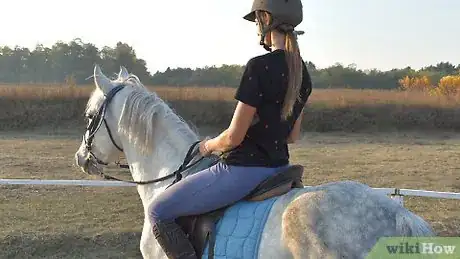
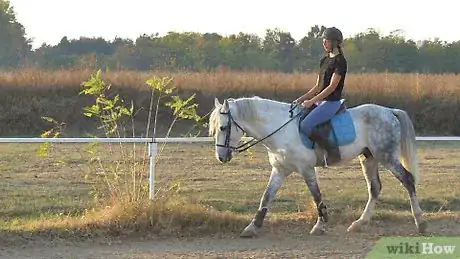
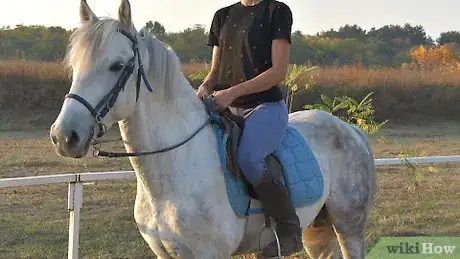
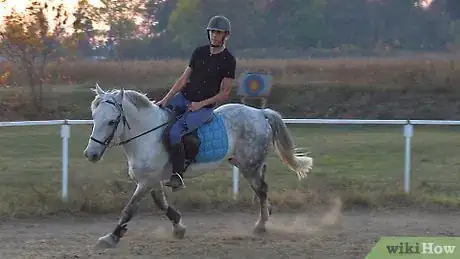
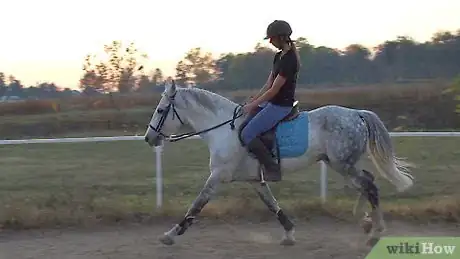
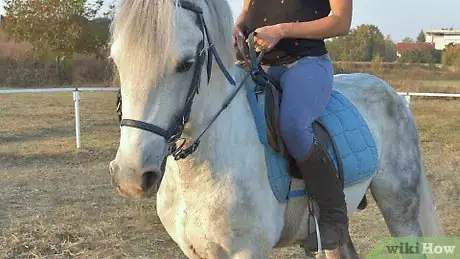
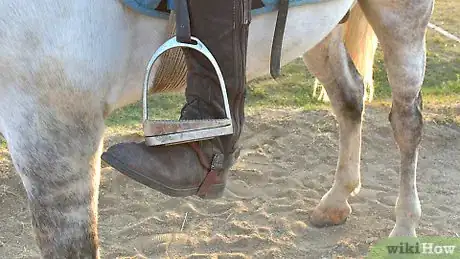
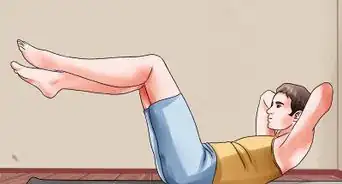
-Step-11.webp)

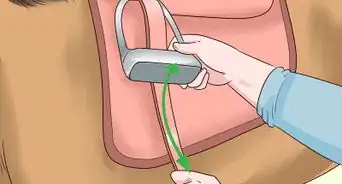
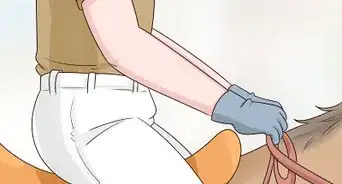
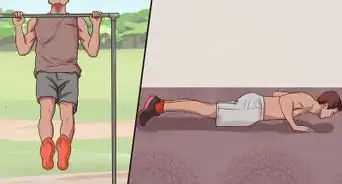














-Step-11.webp)




































